Also read: 7 best free ai image generators
Understanding Generative AI Infrastructure
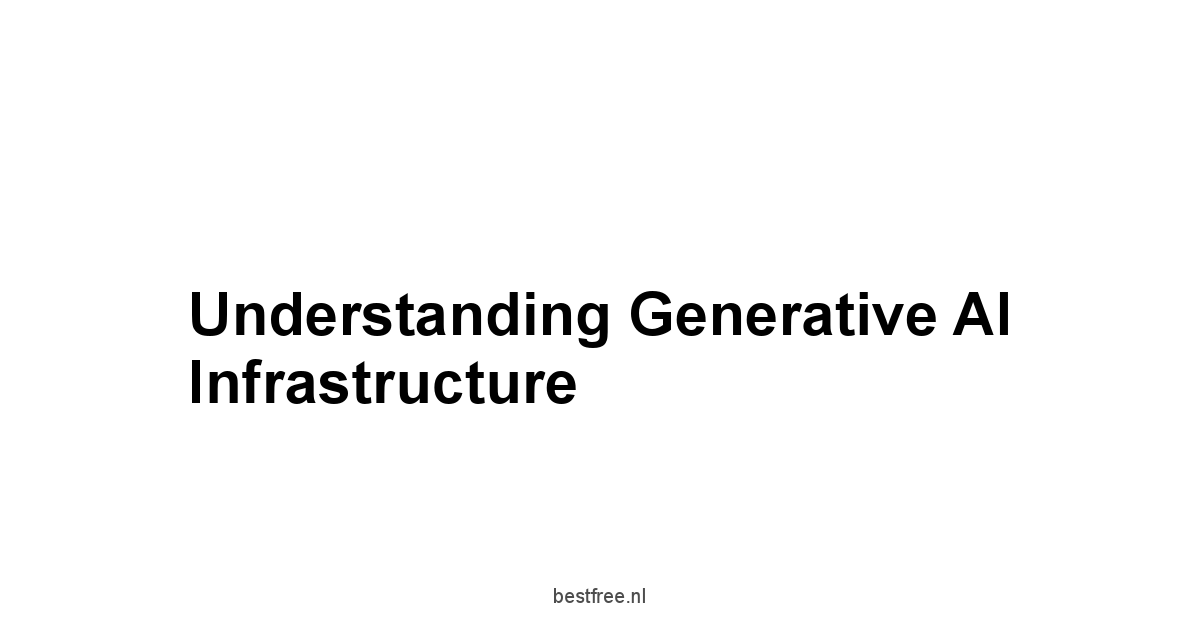
Generative AI infrastructure is the set of systems and technologies that create, deploy, and manage generative artificial intelligence models.
These models produce original content—images, text, podcast, video. They need strong infrastructure.
As AI advances, so does the supporting infrastructure.
It includes hardware—processing units and networks—and software systems that aid model training and output evaluation.
Understanding generative AI infrastructure is vital for businesses and developers who wish to leverage these technologies.
The infrastructure must offer speed, flexibility, and processing power to handle the vast datasets and learning algorithms generative models need.
A report by McKinsey states businesses that use AI infrastructure effectively see a 5-10% profit margin increase and lower operational costs. Investing in generative AI infrastructure can be transformative.
What is Generative AI Infrastructure?
Generative AI infrastructure includes hardware, software, and networks that empower AI applications.
At its core, it streamlines the development and deployment of models that generate content or predict outcomes from existing data.
This infrastructure is more than algorithms. It is an integrated ecosystem for rapid experimentation, scaling, and optimization.
A key part of this infrastructure is cloud computing, which allows scalable resource management.
Amazon Web Services AWS and Microsoft Azure provide powerful cloud solutions for AI workloads.
Using these technologies gives organizations access to high-performance computing resources, adapting to the fluctuating demands of AI model training and inference.
Moreover, solid generative AI infrastructure must ensure harmony between data storage, model management, and computational resources, forming a cohesive ecosystem for AI-driven insights.
Key Components of Generative AI Systems
Generative AI systems depend on key components to operate well.
These components include:
- Data Storage: Centralized storage, using cloud services or distributed file systems, manages massive data volumes for model training and validation.
- Processing Power: Graphics Processing Units GPUs and Tensor Processing Units TPUs deliver the computational power needed to train complex models efficiently. Specialized hardware can cut training time by up to 70% compared to CPUs.
- Model Management: Tools for version control and model evaluation streamline development. MLflow and DVC Data Version Control are crucial for managing machine learning model lifecycles.
- Networking: High-speed networks enable quick data transfer between storage and processing units, reducing latency.
- Deployment Frameworks: Platforms like Kubernetes allow effective AI model deployment, letting businesses scale and adapt their AI applications.
Understanding these components is vital for anyone looking to implement or enhance generative AI solutions.
Importance of Infrastructure in AI Development
Effective infrastructure is essential for successful AI projects.
It impacts timelines, resource allocation, and output quality.
Without solid infrastructure, even advanced AI models face slow processing, data bottlenecks, and inefficiencies, leading to increased costs and missed opportunities.
In a recent Gartner survey, 79% of AI leaders said inadequate infrastructure hinders their innovation and market responsiveness.
This data highlights infrastructure’s critical role in sustaining current AI applications and enabling future innovations.
As generative AI evolves, those with adaptable infrastructures will better position to embrace new capabilities that AI technology offers.
Also read: best ai agents in 2025
Major Trends Shaping Generative AI in 2025
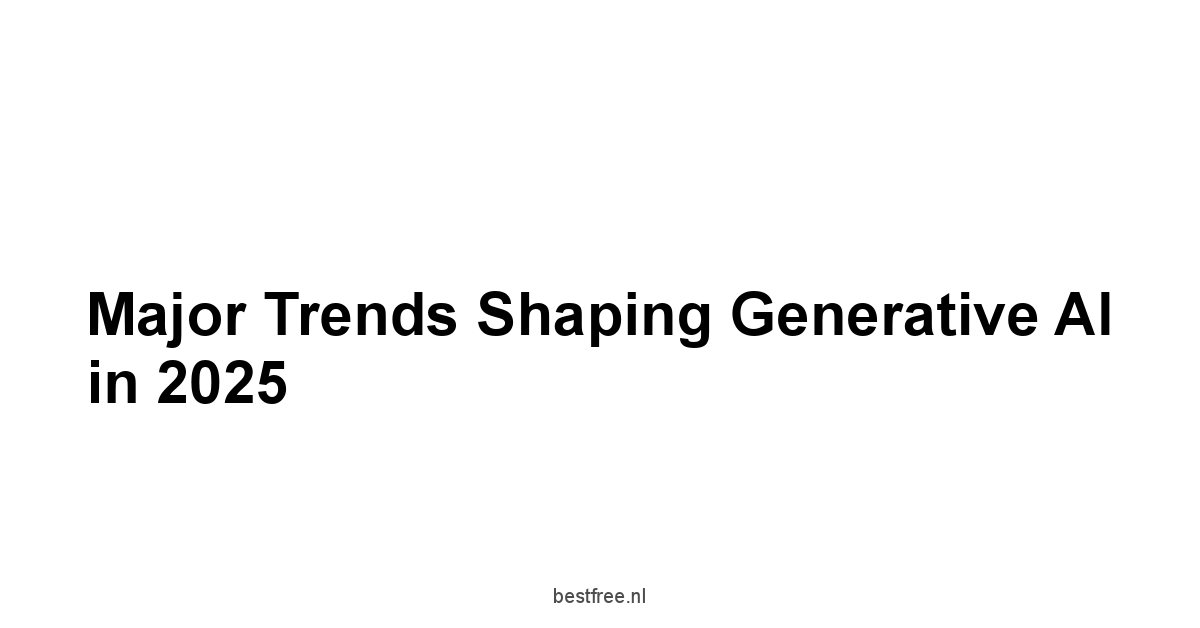
The Rise of Cloud-based AI Solutions
Generative AI grows. Its reliance on cloud technology does too.
Cloud-based AI solutions gain traction, offering scalable resources. Companies train complex models without heavy investment in physical infrastructure.
Fortune Business Insights forecasts the global cloud AI market will rise from $4.4 billion in 2021 to $60 billion by 2028. This illustrates the shift toward cloud.
With cloud infrastructures, organizations access computing resources on demand.
They deploy AI applications across regions, unhindered by geography.
This flexibility optimizes costs. It also enhances team collaboration.
Cloud providers offer integrated AI tools and services, simplifying generative AI management.
Integration of Edge Computing
Edge computing trends shape generative AI.
With IoT growth and vast datasets, organizations process data closer to its source. They no longer rely only on centralized data centers.
This shift reduces latency and boosts speeds for real-time applications.
Expected growth in edge computing is notable.
Statista estimates the global edge computing market will rise from $4.68 billion in 2020 to $43.4 billion by 2027. Edge computing enables organizations to deploy lightweight models for real-time predictions within devices or local networks, enhancing responsiveness.
Combining generative AI with edge computing yields near-instantaneous results, applicable to autonomous vehicles and smart manufacturing.
Evolution of AI Hardware
AI hardware evolves. Performance optimization for generative tasks increases.
Innovations in GPU and TPU technology quicken and enhance model training.
Recent advancements, like NVIDIA’s A100 Tensor Core GPUs, prove invaluable for AI workloads.
Portable hardware, such as Google’s Coral Edge TPU, becomes crucial for deploying AI in resource-constrained settings.
The impact of hardware development is clear.
Recent studies show improved hardware can cut training time for complex models by up to 80%. This speeds up iteration and experimentation.
As companies see the potential of specialized AI hardware, they invest in dedicated infrastructure. This creates a positive feedback loop of improvement in generative AI.
Also read: best free video surveillance software in 2025
Top Generative AI Infrastructure Software
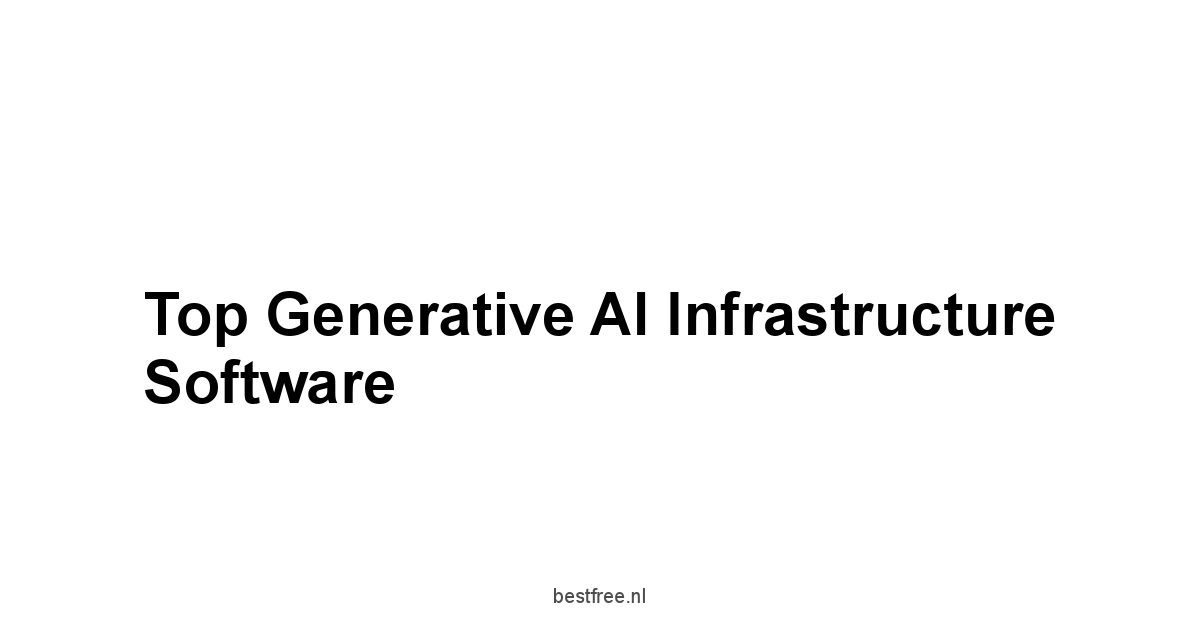
Generative AI infrastructure software is crucial in 2025. Choosing the right tool is vital for organizations deploying advanced AI models.
This section reviews the top software options, assessing their features and effectiveness in generative AI tasks.
Overview of the Leading Software in 2025
- TensorFlow: This open-source library remains essential for AI model development. It excels in complex neural networks and has strong community support.
- PyTorch: Known for its flexibility, PyTorch is favored by researchers and developers. It thrives in dynamic neural networks, a choice for generative models.
- Hugging Face’s Transformers: Focused on natural language processing, this library is key for generative text models, allowing easy access to pre-trained models.
- MLflow: An open-source platform managing the entire machine learning lifecycle. It simplifies collaboration, experiment tracking, and model deployment.
- Kubeflow: A Kubernetes-native platform, Kubeflow is essential for deploying machine learning workflows at scale, aiding in the fine-tuning of generative models.
These tools are vital for managing the complexities of generative AI projects, from development to deployment and scaling.
Evaluation Criteria for Generative AI Tools
When selecting AI infrastructure software, organizations should consider:
- Ease of Use: Software should accommodate both technical and non-technical members, lowering entry barriers.
- Scalability: Effective tools must scale with project demands, handling growing datasets and model complexity.
- Community and Support: A thriving community enhances documentation, tutorials, and troubleshooting resources, boosting productivity.
- Interoperability: Easy integration with existing systems is crucial for maintaining workflow.
- Performance Metrics: Each tool should offer metrics to evaluate processing speeds, accuracy, and usability.
Key Features to Look For in AI Infrastructure
Organizations should seek specific features in generative AI infrastructure software for optimal performance:
- Model Management Capabilities: Enhanced integration for version control and deployment tracking strengthens team collaboration.
- Advanced Processing Libraries: Access to optimized pre-trained models accelerates development timelines and increases modularity within projects.
- User Interface and Visualization Tools: Intuitive GUIs simplify complex data visualizations and model evaluation.
- Support for Multiple Programming Languages: Flexibility is crucial; the ability to switch between languages like Python, R, or Java broadens development opportunities.
These features ensure organizations can implement efficient generative AI solutions.
Also read: 7 beste gratis bestandcompressiesoftware
Scalability and Performance in Generative AI
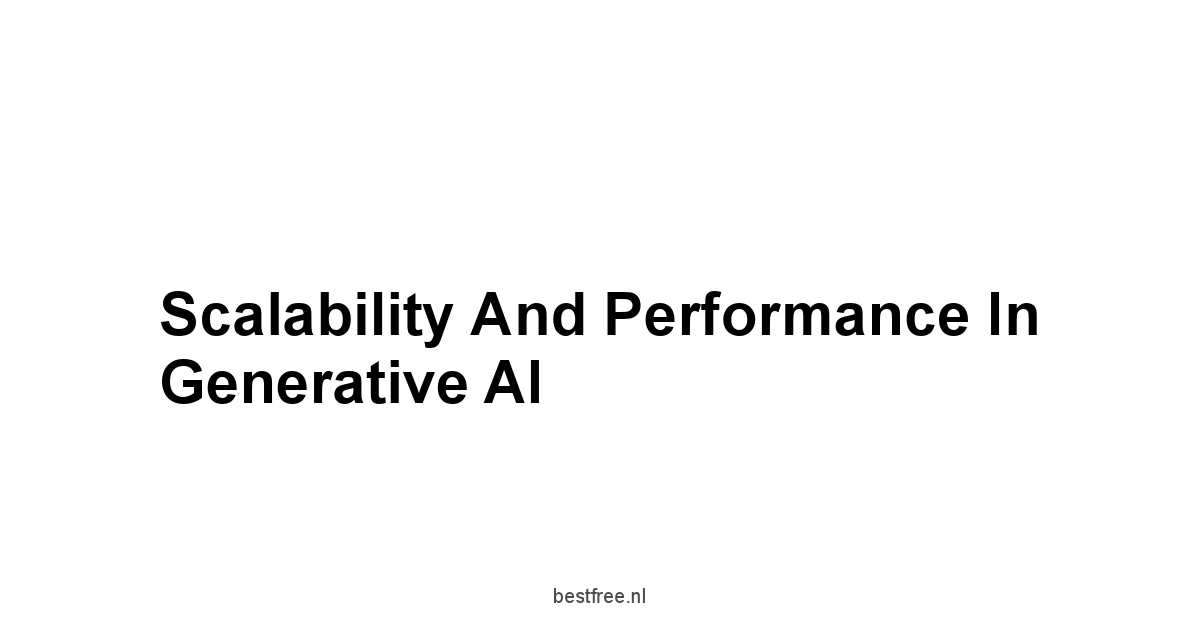
As organizations take up generative AI, scalability and performance become key to success.
The infrastructure must adapt and process efficiently.
Importance of Scalability in AI Projects
Scalability is crucial for AI, especially as projects grow in complexity and data.
A scalable infrastructure allows for increased loads without loss of performance.
This matters as data in generative AI is ever-increasing—Gartner forecasts over 163 zettabytes by 2025.
Effective scaling can cut operational costs.
Organizations using cloud solutions can resize resources to match processing needs.
A rise in user interaction may require more server capacity.
Firms can ramp up resources in peak times and pull back in quiet periods.
Performance Metrics for Evaluating Infrastructure
When assessing generative AI infrastructure, organizations should focus on key metrics:
- Benchmark Scores: Evaluate speed and accuracy against standards.
- Latency: The time to generate outputs after data input. Lower latency is crucial for real-time applications.
- Throughput: Measure the data processed in a set time, revealing the infrastructure’s capability for high-volume tasks.
- Resource Utilization: Analyzing how effectively hardware is used informs optimization.
Focusing on these metrics helps organizations improve and manage their generative AI structures.
Also read: 7 best free file compression software
Security Considerations for Generative AI
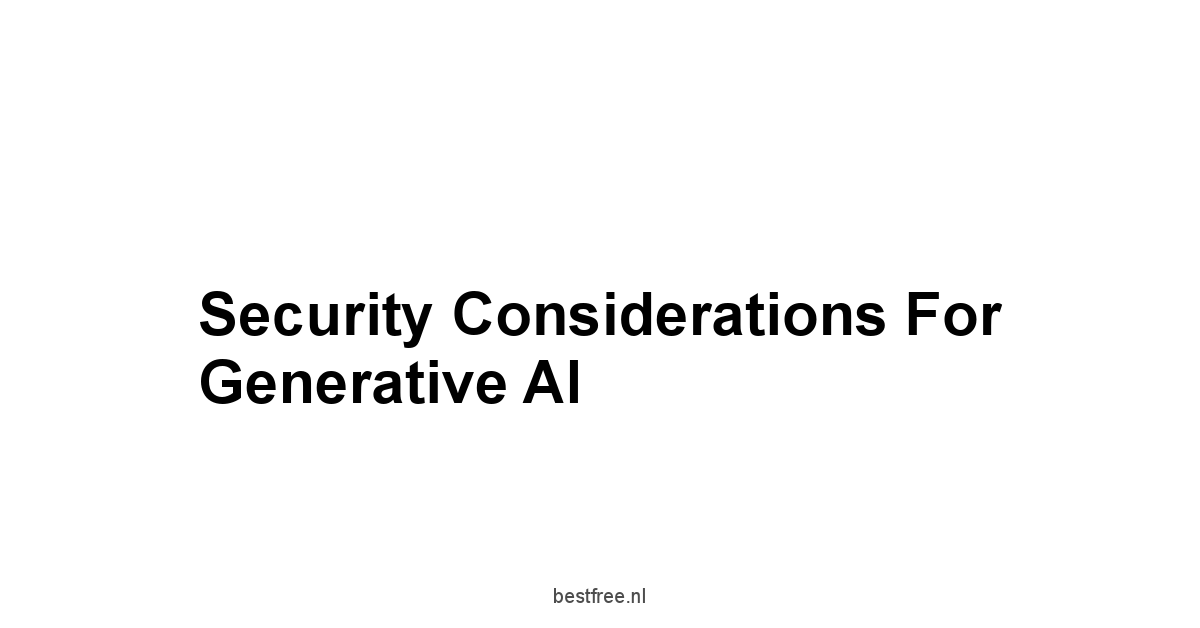
Generative AI systems are now essential to many applications. Security is crucial.
The risks of data breaches, model flaws, and compliance issues demand systematic measures to maintain the integrity of generative AI projects.
Data Privacy and Compliance Requirements
Data privacy is critical in generative AI. Regulations on data use are tightening.
The General Data Protection Regulation GDPR and California Consumer Privacy Act CCPA set strict standards for processing and storing personal information. Organizations must adopt strict compliance methods.
To comply, companies should use data encryption, anonymization, and access controls to safeguard sensitive information during the AI process.
Those who ignore privacy standards face hefty fines and damage to their reputation.
IBM reports the average cost of a data breach reached $4.24 million in 2021, highlighting the financial need for strong data protection.
Protecting AI Models from Vulnerabilities
Protecting AI models is just as important as data privacy.
Generative models face increasing risks from adversarial attacks. Organizations must use strategies to address vulnerabilities.
Common tactics include:
- Adversarial Training: Adding adversarial examples to the training set helps models resist manipulative inputs.
- Regular Audits: Periodic assessments of models and outputs can reveal unexpected vulnerabilities and allow for corrections.
- Model Verification Tools: Using specialized tools ensures that models meet security standards and operate correctly in various conditions.
By applying these practices, organizations can greatly reduce risks linked to generative AI deployment.
Also read: best free email software
User Experience and Accessibility

Creating user-friendly AI infrastructure is vital. Both technical and non-technical team members must navigate AI tools effectively.
Enhancing accessibility fosters wider adoption, enabling more teams to exploit generative AI’s potential.
Designing User-Friendly AI Infrastructure
Prioritize user experiences in AI tool design.
A simple user interface UI and user experience UX enable effective interactions with generative AI applications.
A design of simplicity and usability speeds learning and lessens frustration.
Key design principles include:
- Consistent Navigation: Clear navigation lets users find features swiftly.
- Visual Feedback: Visual feedback, like real-time indicators, shows users their actions’ effectiveness.
- Help and Documentation: Comprehensive help and accessible documentation assist users in resolving issues and optimizing workflows.
By prioritizing user experience, organizations enable teams to focus on AI insights, not complex systems.
The Role of APIs in Enhancing Accessibility
Application Programming Interfaces APIs are crucial for enhancing accessibility in generative AI infrastructure.
APIs enable seamless integration between software platforms and tools, allowing data and functionalities to be shared across applications.
Organizations can leverage APIs in several ways:
- Integration with Existing Systems: APIs connect generative AI tools with content management systems, data analytics platforms, and other essential applications, streamlining workflows.
- Customization Flexibility: APIs allow teams to tailor AI applications to specific needs and preferences, enhancing usability.
- Collaboration and Sharing: Collaboration becomes easier when teams connect tools and share data, promoting efficient teamwork.
Effective API use boosts productivity and fosters innovative generative AI applications.
Also read: best free proofreading software in 2025 2
Collaboration in Generative AI Development
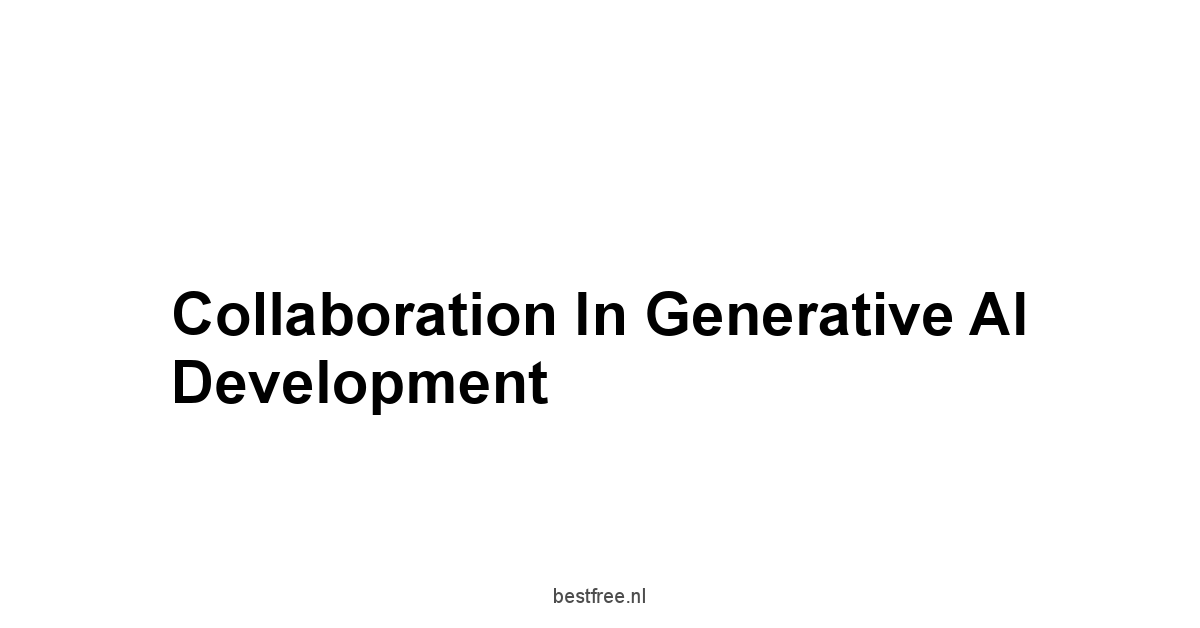
Successful generative AI projects depend on teamwork and diverse expertise.
A collaborative environment leads to innovative solutions and better outcomes.
Tools for Team Collaboration in AI Projects
Many tools help with collaboration in generative AI projects.
Notable tools are:
- Slack: Slack centralizes communication. Team members discuss, share updates, and solve challenges together.
- GitHub: This platform provides version control. Developers work seamlessly on AI models, tracking changes and progress.
- Notion: Notion serves as a workspace. Teams share documentation, track milestones, and manage tasks, keeping everyone aligned.
- Trello: Trello is a visual project management tool. It organizes tasks and assigns responsibilities, ensuring accountability and transparency.
The right collaboration tools can change project outcomes, allowing teams to share information and insights effectively.
Impact of Open-source Communities on Generative AI Tools
Open-source communities advance generative AI development.
Projects like TensorFlow and PyTorch thrive on community contributions, fostering innovation and speeding improvements.
Key impacts of open-source communities are:
- Collaborative Innovation: Developers worldwide enhance codebases, add features, and troubleshoot together.
- Accessibility of Knowledge: Tutorials and forums create a rich knowledge source, helping new users gain skills quickly.
- Diversity of Perspectives: Contributions from various backgrounds inspire different problem-solving approaches, leading to more robust AI systems.
By embracing open-source communities, organizations access vast knowledge, fostering collaboration and innovation in generative AI projects.
Also read: 5 beste gratis vpns
Future Prospects of Generative AI Infrastructure
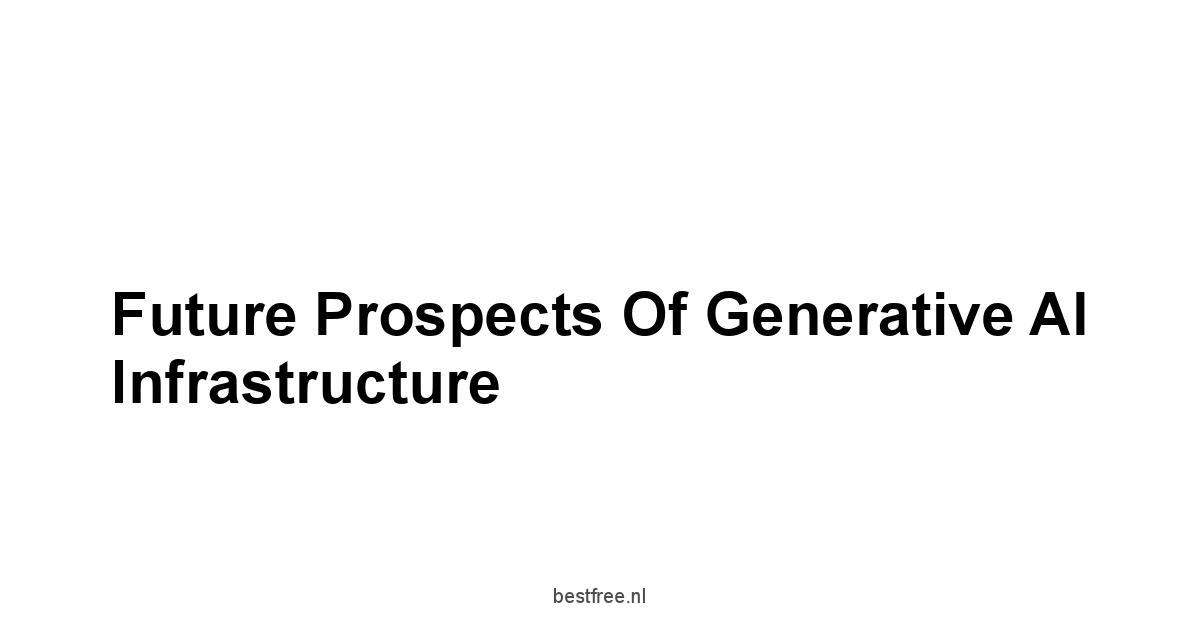
Generative AI evolves. The prospects for its infrastructure in 2025 are bright.
Organizations that adapt and innovate will seize new capabilities for success and advantage.
Predictions for Advances in 2025
Key advancements in generative AI infrastructure are expected by 2025:
- Increased Integration of AI and IoT: As IoT technology spreads, the fusion of generative AI and IoT devices will fuel automation and data-driven decisions.
- Improved Customization Options: Organizations will seek AI solutions tailored to their needs, pushing advancements in user customization within generative AI tools.
- Enhanced Human-AI Collaboration: AI models will increasingly complement human abilities, nurturing collaboration in creative fields like art, design, and writing.
These advancements show the vast potential in generative AI infrastructure across industries.
Long-term Implications for Businesses and Developers
The long-term implications of generative AI infrastructure are profound for businesses and developers.
Companies will gain efficiencies and reduce costs, unlocking new revenue streams through AI-enhanced products and services.
Furthermore, leveraging data insights via generative AI will spark innovations in marketing, customer service, and product design.
Also read: 10 best free wordpress themes
Best Practices for Implementing AI Infrastructure
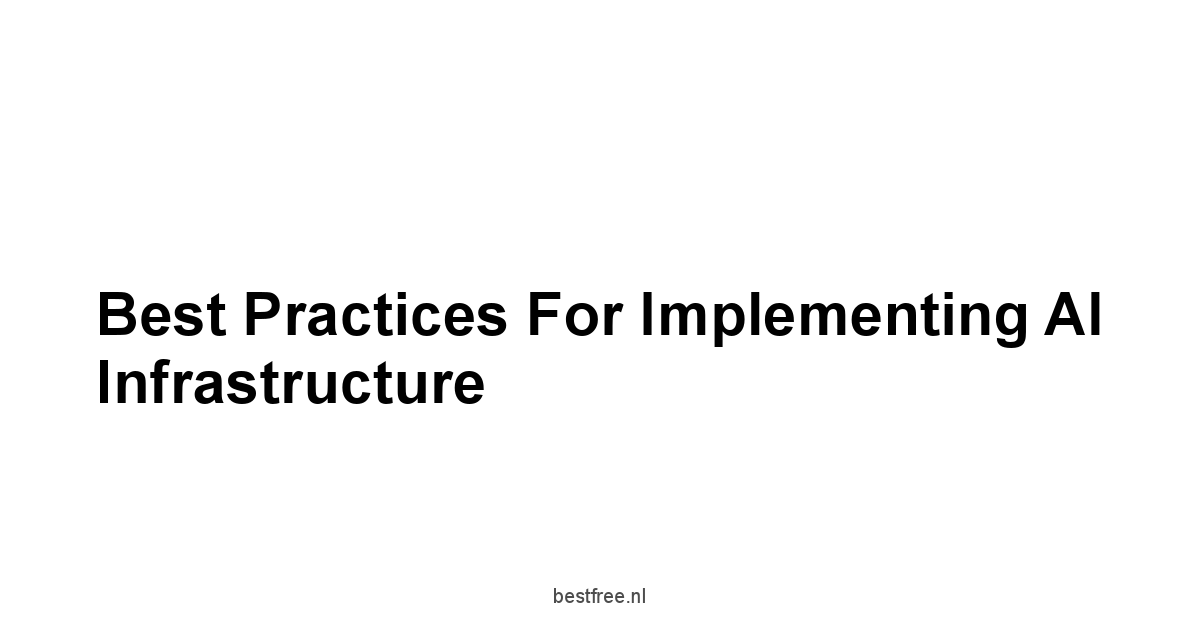
As groups take on generative AI, solid infrastructure is essential.
Here are best practices for smooth integration and deployment.
Strategies for Successful AI Integration
- Conduct Thorough Planning: Set clear goals, timelines, and measurements before starting. It gives direction.
- Invest in Training: Train your team on tools and processes in generative AI. They must be prepared to be effective.
- Start Small and Scale: Begin with small projects. Test the infrastructure. Scale as you build confidence. Troubleshoot as needed.
These steps help reduce risks and lead to success in generative AI.
Common Pitfalls to Avoid in Generative AI Deployment
Some pitfalls can disrupt effective deployment of generative AI:
- Neglecting Data Quality: Bad data yields unreliable models. Focus on clean, organized datasets for the best outcomes.
- Ignoring Compliance Standards: Disregarding privacy and compliance can bring legal troubles. Strict compliance checks are necessary.
- Overlooking User Input: Ignoring user feedback can ruin the experience and limit AI tool usage.
- Underestimating Timeline Requirements: Deployment may take longer than expected. Manage expectations to prevent rushed work.
Also read: 5 beste gratis projectmanagementtools
Final Thoughts
Generative AI infrastructure lies at the crossroads of technology and creativity. It will transform industries.
By grasping core components and adopting advancements, organizations can realize their potential.
Cloud solutions, edge computing, and specialized hardware will enhance efficiency and innovation. Businesses can achieve what once seemed unattainable.
The cloud AI market is set to reach $60 billion by 2028. Edge computing expands swiftly. Companies must invest in modern infrastructure.
Collaboration and user accessibility are crucial.
User-friendly interfaces and collaborative tools will enable teams to maximize generative AI’s power.
Open-source contributions offer rich resources for innovation and learning.
Organizations dedicated to collaboration and continuous learning will thrive. Those that disregard these will fall behind.
Finding a balance between innovation and protecting sensitive data is vital.
Robust security measures and adherence to data protection laws will mitigate risks and build consumer trust.
Rising costs from data breaches stress the need for security in AI initiatives.
In summary, generative AI infrastructure will spark revolutionary changes in many sectors.
The time to act is now. The future calls with endless possibilities.
Also read: best active learning tools in 2025
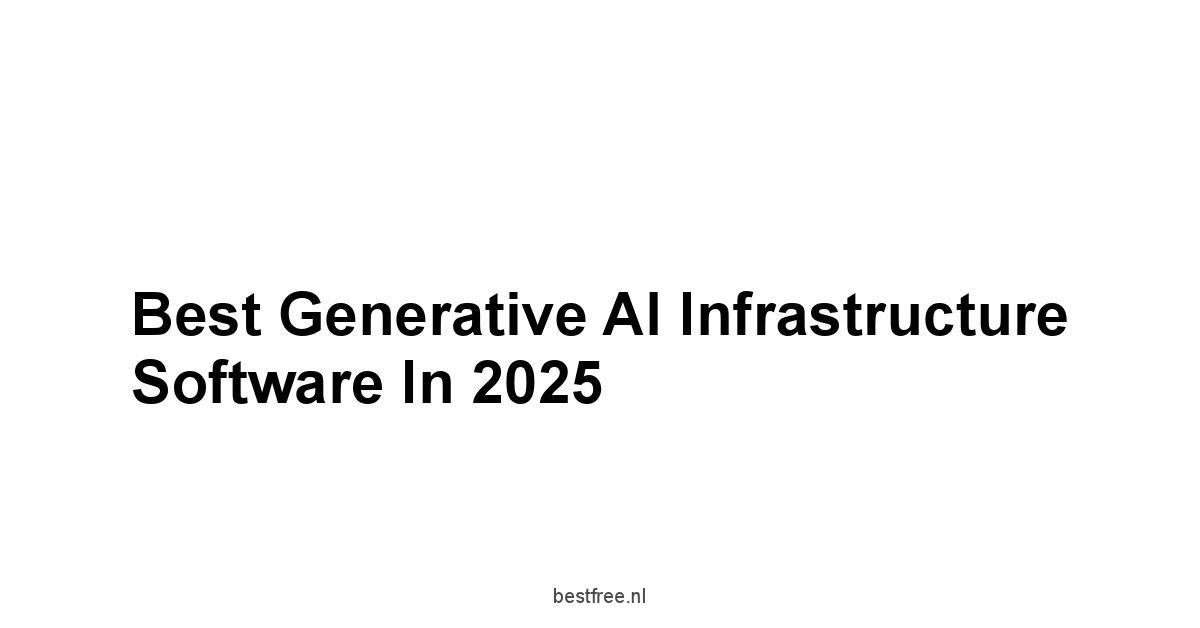




Leave a Reply